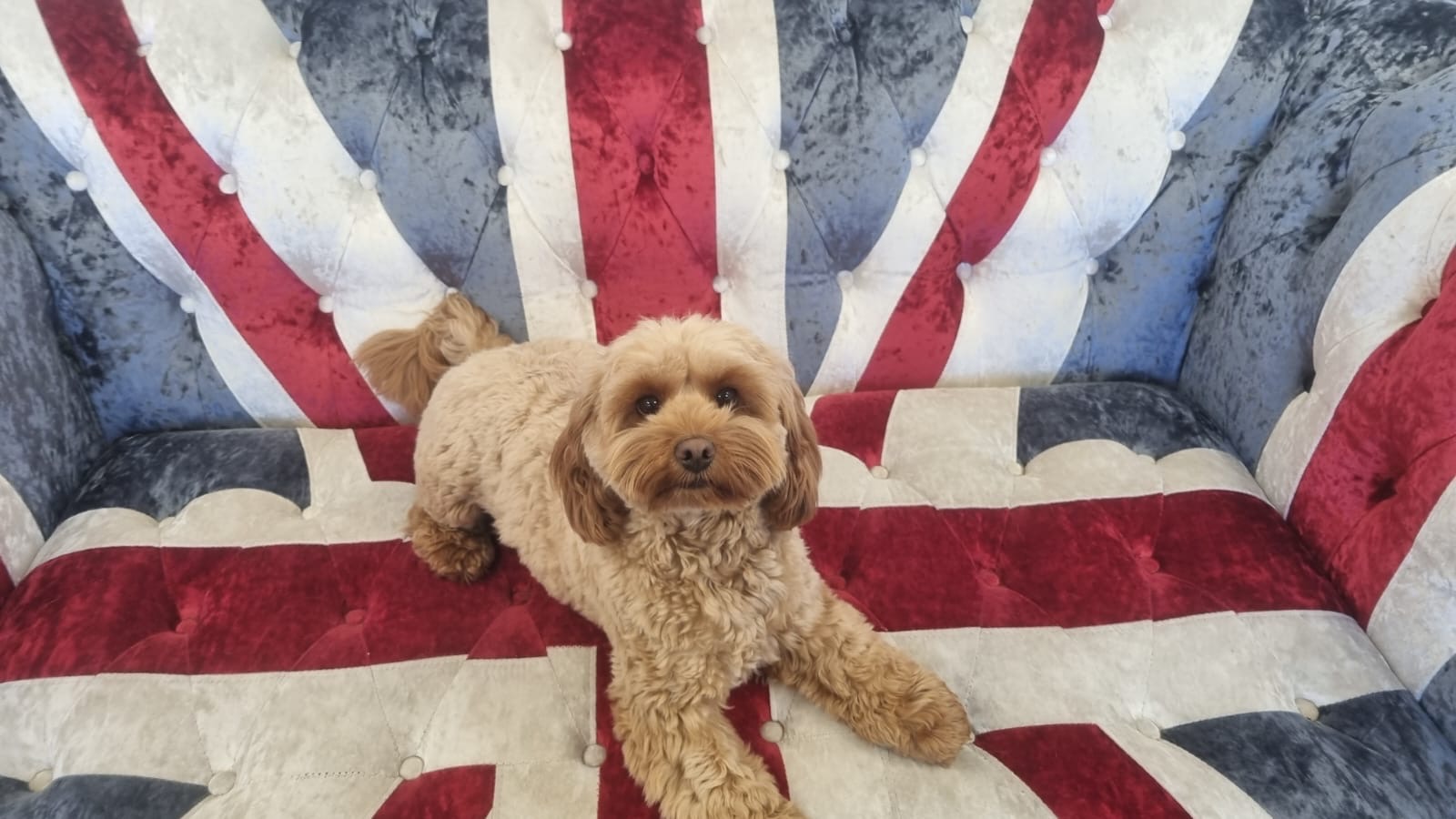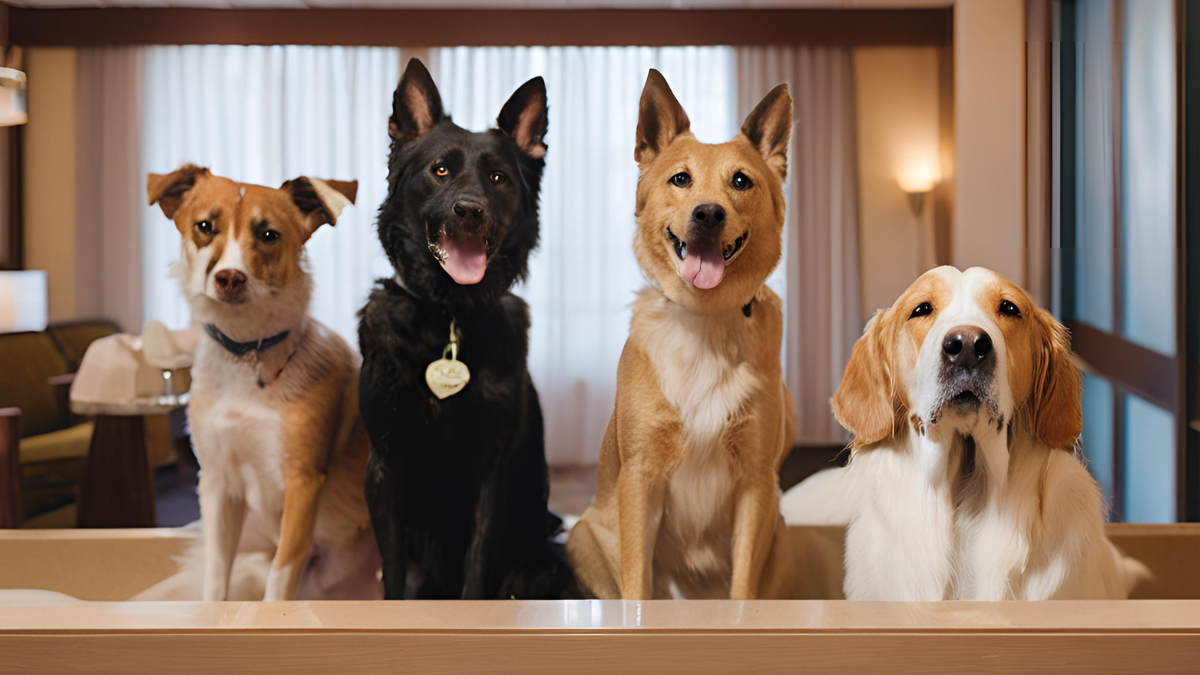Relocating internationally with pets can be challenging, especially when it comes to ensuring their comfort in unfamiliar hotel environments.
Pets often experience heightened stress during these transitions, which can manifest in various ways. How can you ensure your furry friend feels at home in a new place? And what steps can you take to ease their anxiety during the journey?
Understanding the importance of pet-friendly accommodations is crucial. With 26% of pet parents ranking 'pet friendly' as the top hotel attribute, it's clear that many share this concern. Passport for Pets guides you through the process, from preparing your pet for travel to selecting the right hotel and creating a comfortable environment. By following our expert advice, you can help your pet adjust smoothly and reduce their stress, ensuring a more pleasant experience for both of you.
1. Preparing Your Pet for the Journey
Familiarisation with Travel Carriers
Getting your pet accustomed to their travel carrier well before the trip is crucial. The unfamiliarity of a new environment can be daunting, and a travel carrier that feels like a haven can significantly reduce anxiety. Start by introducing the carrier as part of your pet's daily life. Place it in a common area with the door open, allowing your pet to explore it at their own pace. Gradually, you can encourage them to spend more time inside by placing treats, toys, or even their bedding within it. This gradual familiarisation helps in making the carrier a familiar and comfortable space.
Routine Maintenance
Maintaining your pet's regular feeding, walking, and sleeping schedules can play a pivotal role in reducing their anxiety. Pets thrive on routine, and any disruption can lead to heightened stress levels. Keeping their daily schedule as consistent as possible provides a sense of normalcy amidst the changes. Feed them at the exact times, take them for walks as usual, and ensure they get their regular sleep. This consistency can help make the transition smoother and less stressful for your furry friend.
Vet Consultation
Consulting with a veterinarian before the journey is essential. A vet can provide valuable travel tips tailored to your pet's needs. They may recommend calming aids, such as pheromone sprays or anxiety-reducing supplements, which can be particularly helpful during the trip. Additionally, a vet can ensure that your pet is in good health and up-to-date with vaccinations, often required for international travel. This proactive approach can prevent potential health issues and provide a smoother journey for your pet.
2. Selecting the Right Pet-Friendly Hotel
Research and Reviews
Choosing the right pet-friendly hotel requires thorough research. Resources like LateRooms.com, which reported a 132% rise in pet-friendly hotel bookings, can be handy. Look for hotels with positive reviews from other pet owners, as these can provide insights into the quality of pet accommodations. Respond to comments about the hotel's pet policies, amenities, and overall environment. This research helps find a hotel that genuinely caters to the needs of pets and their owners.
Alternatively, some pet owners prefer the home-like environment provided by apps like Rover, which connects you with local hosts, offering more familiar settings for your pet.
Amenities and Services
When selecting a pet-friendly hotel, consider the amenities and services offered. Look for hotels that provide pet sitting, walking areas, and pet-friendly dining options. These services can significantly impact your pet's comfort and well-being. For instance, a hotel with a designated pet walking area allows pets to exercise and relieve themselves without added stress. Similarly, pet-friendly dining options ensure you can enjoy meals without worrying about leaving your pet alone.
Booking Tips
Booking a pet-friendly hotel involves more than just selecting the right one. Confirm the hotel's pet policies, including any additional fees or restrictions. Some hotels may have weight limits or breed restrictions, so verifying these details beforehand is essential. Additionally, inquire about special requirements, such as vaccination records or pet deposits. Confirming these details in advance can avoid surprises and ensure a smooth check-in process.
3. Creating a Comfortable Hotel Environment
Bringing Familiar Items
Bringing familiar items from home can comfort your pet in a new environment. Pack their favourite toys, bedding, and even a piece of clothing with your scent. These familiar items create a sense of security and familiarity. The home scent can be particularly soothing, reducing anxiety and helping your pet adjust to the new surroundings more quickly.
Setting Up a Safe Space
It is crucial to set up a designated area in the hotel room where your pet can feel secure. Choose a quiet corner of high-traffic regions and set up their bedding and toys there. This safe space is a retreat where your pet can relax and feel protected. Ensure that the area is free from potential hazards, such as electrical cords or small objects that could be swallowed. This careful setup can significantly affect your pet's comfort and well-being.
Routine Continuation
Maintaining your pet's routine, even in the hotel environment, is essential. Continue feeding, walking, and playing with your pet at the exact times as you would at home. This consistency helps reduce anxiety and provides a sense of normalcy. Additionally, try to keep their sleeping area similar to what they are used to at home. By maintaining these routines, you help your pet feel more at ease and adjust quickly to the new environment.
4. Managing Pet Behaviour in New Surroundings
Gradual Introduction
Gradually introducing your pet to the new environment can help reduce stress. Start by allowing them to explore the hotel room while you are present. This initial exploration helps them become familiar with the new space. Gradually, you can leave them alone for short periods, increasing the duration as they become more comfortable. This gradual introduction helps build their confidence and reduce anxiety.
Positive Reinforcement
Using treats and praise to encourage calm behaviour is an effective strategy. Positive reinforcement helps your pet associate the new environment with positive experiences. Reward your pet for calm behaviour, such as lying quietly or exploring the room without anxiety. This approach helps reinforce positive behaviour and reduce stress. Additionally, interactive play can keep your pet engaged and provide a healthy outlet for their energy.
Interactive Play
Interactive play is crucial in keeping your pet engaged and reducing stress. Bring along your favourite toys and engage in play sessions to help them burn off excess energy. This physical activity can help reduce anxiety and promote relaxation. Additionally, interactive play provides mental stimulation, which is essential for your pet's overall well-being. By keeping them engaged, you help create a positive and stress-free environment.
5. Addressing Common Stress Indicators
Recognising Signs of Stress
Recognising common signs of pet stress is essential in addressing their needs promptly. Look for excessive barking, pacing, or changes in eating habits. These signs can indicate that your pet is feeling anxious or uncomfortable. By being aware of these stress indicators, you can take immediate action to alleviate their anxiety.
Immediate Actions
If your pet shows signs of stress, there are several immediate actions you can take:
- Calming techniques, such as gentle petting or a calming spray, can help reduce anxiety.
- Providing a quiet and comfortable space where your pet can retreat can make a significant difference.
- Offering a blanket or t-shirt with a familiar scent, such as your own, can help comfort your pet and provide a sense of security.
If the stress persists, consult a veterinarian for further advice and possible calming aids.
Long-Term Strategies
Implementing long-term strategies for reducing pet stress during future travels is crucial. Gradual desensitisation to travel and new environments can help build your pet's confidence. Maintaining a consistent routine and providing familiar items can make future travels less stressful. These proactive steps ensure a smoother and more comfortable experience for you and your pet.
Wrapping Up: Ensuring a Smooth Transition for Your Pet
Relocating internationally with your pet doesn't have to be a stressful ordeal. By familiarising your pet with their travel carrier, maintaining their routine, and consulting with a vet, you can lay the groundwork for a smoother journey. Selecting the right pet-friendly hotel and creating a comfortable environment with familiar items can further ease their anxiety. Passport for Pets understands the importance of these steps and is dedicated to guiding you through each one, ensuring your pet feels at home even in new surroundings.
Recognising and addressing signs of stress, using positive reinforcement, and engaging in interactive play are crucial in helping your pet adjust. Following these expert tips from Passport for Pets can significantly reduce your pet's anxiety and make their transition seamless. Remember, a well-prepared journey and a comforting environment can transform a potentially stressful experience into a joyous adventure. Isn't it time we made our furry friends' comfort a priority?

